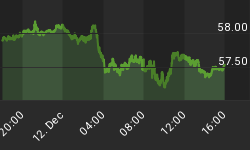For the first time since 2009, US Deficit Spending On the Rise.
Importantly, receipts are up only 1%, but government spending is up 5%.
The deficit does not count "off budget" items like Social Security and student debt, but let's take a look at what they do count.

The U.S. budget deficit as a share of the economy widened for the first time in seven years, marking a turning point in the nation's fiscal outlook as an aging population boosts government spending and debt.
Spending exceeded revenue by $587.4 billion in the 12 months to Sept. 30, compared with a $439.1 billion deficit in fiscal 2015, the Treasury Department said Friday in a report released in Washington. That was in line with a Congressional Budget Office estimate on Oct. 7 for a shortfall of $588 billion. As a share of gross domestic product, the shortfall rose to 3.2 percent from 2.5 percent a year earlier, the first such increase since 2009, government figures show.
"The slowdown in tax collections suggests some cooling in labor market activity," said Gennadiy Goldberg, a strategist at TD Securities LLC in New York. He sees the higher budget deficits implying more borrowing needs by Treasury.
The Treasury said receipts in fiscal 2016 totaled $3.27 trillion, or 17.8 percent of GDP, while spending totaled $3.85 trillion, or 20.9 percent of GDP. Receipts rose $18 billion from fiscal 2015, while outlays jumped $166 billion, the figures showed. The department cited higher spending on Social Security, Medicare, Medicaid and interest on government debt.
For September, which is the final month in the fiscal calendar, the government reported a $33.4 billion surplus. That was lower than the $90.9 billion surplus a year earlier, in part due to calendar adjustments, according to the Treasury.
Receipts Up 1 Percent
Slowing receipts in the face of all this alleged hiring suggests the alleged hiring is way overstated. This is yet another sign that failure to weed out duplicate social security numbers results in double-counting employment.

One way or another, whatever jobs we do create have not done much for tax revenue.
















